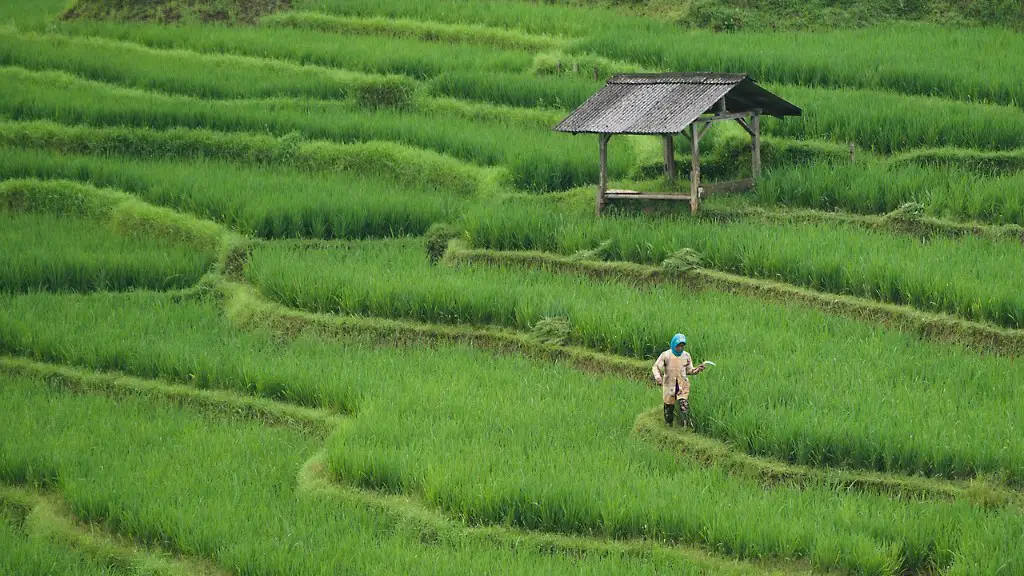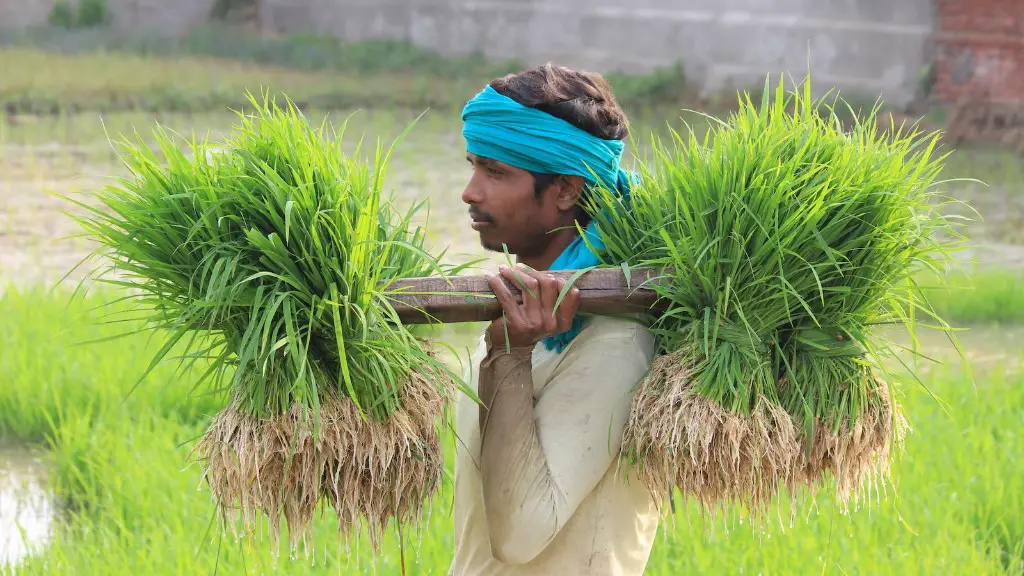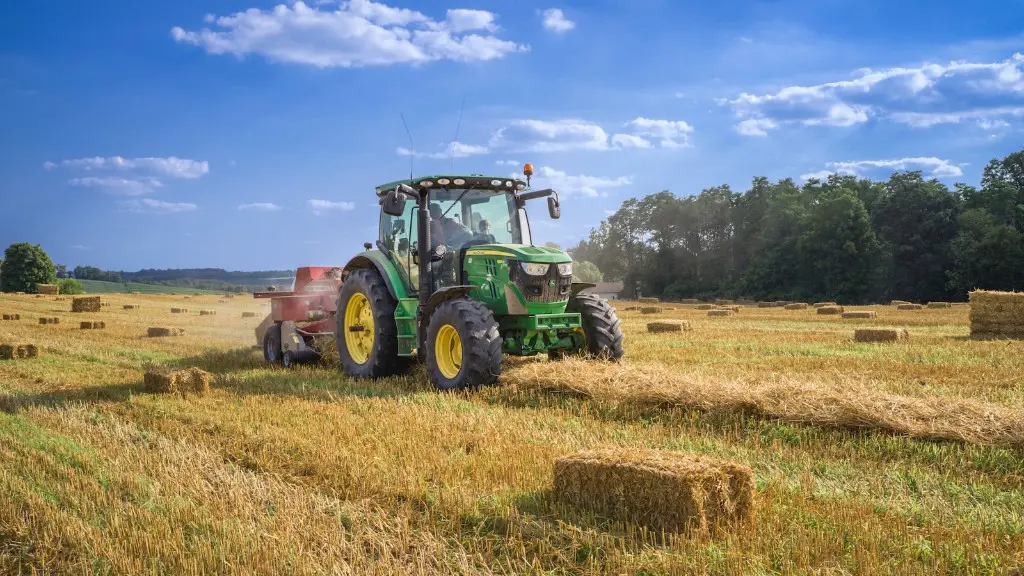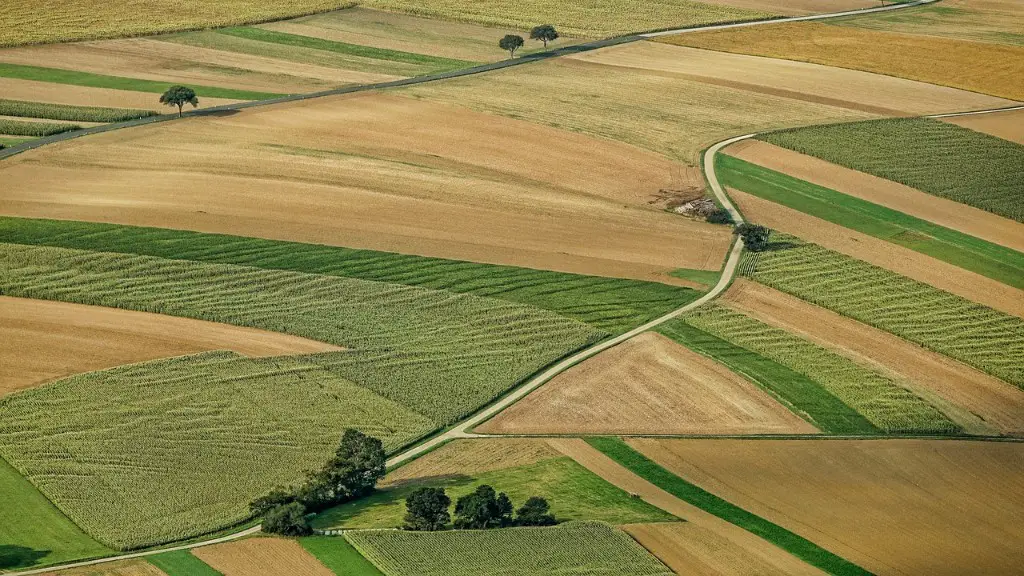Agriculture is a major contributor to soil erosion on a global scale. Decades of human intervention in soil management, cultivation practices, and intensive agricultural production have caused dramatic changes in the soil structure, quality, and productivity. Excessive plowing, removal of crop residues, and disordering of soil materials all threaten the fertility of the soil and its ability to resist water and wind erosion. All of these practices can contribute to soil erosion and reduce its organic matter.
Water erosion is one of the most common ways in which agricultural activities lead to increased erosion. The most common practice of water erosion is the cultivation of deep fields using large machinery. This can have an immense impact on the soil by loosening it, allowing rainwater to wash the soil away. In addition, overgrazing can lead to soil compaction, creating pathways for mineral runoff.
Wind erosion is also largely driven by agricultural activities. Plowing, leaving bare soil exposed, and removing crop residues can increase the amount of wind energy available to cause erosion. As the wind carries away the soil particles, it can carry them far distances away, reducing the fertility of the land. Wind erosion can also be caused by overgrazing, which can reduce the amount of grass to obstruct the wind and soil.
To minimize the effects of erosion, soil conservation techniques must be incorporated into agricultural practices. These techniques include planting cover crops and terraces, reducing tillage, mulching, increasing organic matter, and introducing no-till farming. In addition, farmers can implement conservation efforts such as conservation buffer strips to help filter the sediment, runoff, and prevent the wind from carrying away the soil.
Agriculture can also reduce soil erosion by improving its nutrient cycling. Healthy soils are able to capture, store, and cycle essential nutrients more efficiently and this can lead to improved soil fertility, increased crop yields, and reduced erosion. Nutrients can be supplied to the soil naturally through compost or other types of organic matter, or can be applied through synthetic fertilizers. Either way, these actions help to reduce erosion, thus ensuring that the soil remains productive for many years.
Climate change is another factor that affects erosion due to agriculture. As temperatures increase, precipitation intensity can also increase, leading to more runoff and soil erosion. Warmer temperatures also cause faster evaporation, leaving less time for the soil to absorb the water. Additionally, extreme weather events such as droughts, floods, and storms all contribute to soil erosion, making it even more important for farmers to practice soil conservation.
Agriculture has profoundly transformed the world, providing food and economic growth to millions. However, the unintended consequences of farming practices can be severe, leading to increased soil erosion. This affects not only the fertility of the land, but also the environment, as soil is lost. To ensure a more sustainable future, agricultural practices must be modified to maximize soil conservation techniques, while also encouraging better nutrient cycling and sparing the soil from the effects of a changing climate.
Proper Land Management
Proper land management is key to reducing erosion due to agricultural practices. To this end, farmers must employ sustainable practices such as crop rotation, terracing, and no-till farming to conserve the soil. Crop rotation is a practice where different crops are planted in the same field on a rotation basis, preventing the depletion of soil nutrients. Terracing is another method used to reduce soil erosion, as it creates flat surfaces which resist movement of soil and water due to gravity or wind. Finally, no-till farming is an increasingly popular practice which involves minimal use of machinery and no soil disturbance, which reduces runoff and erosion.
In addition to the above, farmers can implement conservation efforts such as buffer strips and contour farming. Buffer strips are areas of vegetation planted along the edges of fields to help filter sediment and runoff, while contour farming involves ploughing and planting on the contours of slopes to reduce surface runoff.
All of these strategies can be effective in reducing soil erosion, but they require careful integration into existing agricultural practices and a long-term approach. Open communication and collaboration between landholder, government, and community groups is crucial to finding solutions that work for all parties and create lasting solutions.
Urban Agriculture
Urban agriculture is a growing area of focus for reducing erosion due to agriculture. This is because cities are much more densely populated and pave over large areas of land, increasing the potential for erosion due to runoff. By creating urban farms and green spaces, cities can capture and store runoff, reducing erosion and improving water quality. In addition, urban agriculture reduces the need for large-scale industrial agriculture, which can have a damaging environmental impact.
Urban agriculture can take many forms, from rooftop gardens to rooftop farms, to green walls and urban beekeeping. All of these strategies help reduce water runoff, improve air quality, increase green cover, support local economies, and provide food to urban residents. In addition, they can provide a habitat for wildlife and mitigate air pollution. By investing in these systems, cities can reduce soil erosion due to agriculture and create a more sustainable future.
Inequity
Inequities associated with soil erosion due to agricultural practices also need to be taken into account. Women, minorities, and small farmers are often the most impacted as they are less likely to own the land or have access to the resources needed to implement soil conservation practices. In addition, their reliance on subsistence farming makes them even more vulnerable, as the costs associated with soil conservation practices can be difficult to bear. Thus, the most affected communities must be involved in any solutions to prevent erosion.
Governments are also responsible for protecting resources against degradation and erosion due to agriculture. This includes enforcing regulations on large-scale farms, developing agricultural policies that incentivizes soil conservation initiatives, and investing in research to develop better soil management strategies. By doing so, governments can help address the underlying causes of soil erosion while also ensuring that communities have access to the resources needed to protect their land.
Microclimates
Another factor that can reduce soil erosion due to agriculture is the creation of microclimates. These are localized areas in which the environment has been modified to provide specific habitat requirements for certain species of plants or animals. By creating microclimates, farmers can reduce runoff, soil erosion, and support local biodiversity. For instance, farmers can create ponds and wetlands to help maintain water quality, use windbreaks or berms to prevent winds from blowing off the soil, or keep undisturbed grass strips to protect against soil erosion.
These strategies are beneficial not only to the environment but also to the farmers. Microclimates can provide refuge for pollinators, act as a source of food and nutrition, and also increase aesthetic appeal. In addition, they provide a way of diversifying a farm, which can increase its financial security.
Climate Smart Agriculture
Finally, climate-smart agriculture can be used to reduce erosion due to agriculture. This type of agriculture is a holistic approach that includes practices such as sustainable soil management, integrated pest management, water storage, mixed cropping, and agroforestry. These practices are designed to reduce emissions, improve land health, and increase productivity. Climate-smart agriculture can be an effective way to reduce erosion, as it provides farmers with a range of options to choose from in order to reduce their environmental impact.
Climate-smart agriculture also depends heavily on technology, such as the use of remote sensing to identify areas at risk for erosion and soil degradation. By using this technology, farmers can better understand and target their activities in order to reduce their environmental impact. In addition, farmers can use climate-smart agriculture practices to adapt to changing climatic conditions and weather patterns, helping them to reduce erosion and improve their land.
In conclusion, agriculture is a major source of soil erosion worldwide. To reduce the impact of agricultural activities, farmers must incorporate soil conservation techniques, while also taking into account climate change and social and economic inequities. Furthermore, the use of microclimates and climate-smart agriculture can help farmers reduce erosion and improve land health. By implementing these solutions, agriculture can not only become more sustainable, but can also promote environmental, economic, and social benefits for all.




